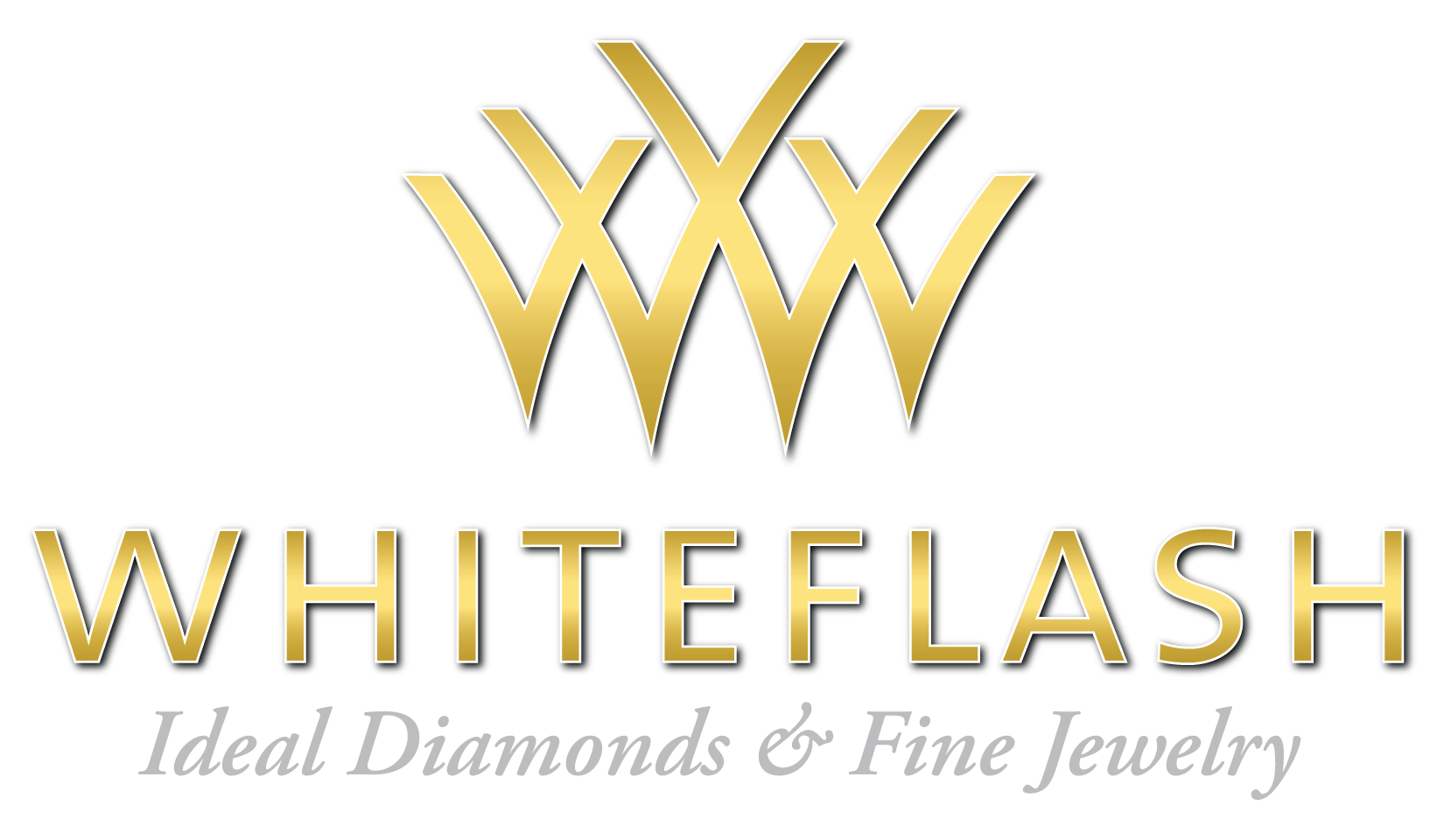How to Tell if a Diamond is Real
A real diamond – an authentic, natural stone — is one of the most valuable things on Earth. Of course, there are also several different gems that look nearly identical to real diamonds but aren’t nearly as valuable. Some, in fact, are relatively worthless.
There’s nothing wrong with wearing a fake diamond if your budget doesn’t allow for the real thing or you don’t want to worry about a valuable real diamond getting stolen. But just knowing that fake diamonds are out there can rightfully cause anxiety for buyers about to spend thousands on a diamond. The issue is of course that many people may not be able to distinguish between natural diamonds and synthetic diamonds.
Here are several ways to tell if a diamond is real or fake. Some of these tests you can do at home with a few simple tools. Others require professional equipment or a jeweler’s expertise. Many of these tests aren’t 100% conclusive on their own. But if a diamond passes two or more of these tests you can be increasingly confident of your diamond’s authenticity.
How to tell if a diamond is real at home
The following tests can help you determine whether a diamond is real or fake using things you probably have around the house.
The fog test
Diamonds are excellent thermal conductors. They allow heat to pass through them rapidly. If you blow on a diamond as if you are trying to fog a window, the fog will dissipate from a real diamond almost instantly. On most materials that aren’t real diamond, the fog will linger for a second or two before slowly fading.
The water test
Real diamonds are incredibly dense and will sink in water. For this test, all you need is a glass of water. Fill a drinking glass with tap water and drop your stone in the glass. If it doesn’t sink, you definitely have a fake diamond. Note that this test only works on loose stones. If the gem is already set in jewelry (a ring or even earring post), the metal setting may cause even a fake diamond to sink. The bottom line is that flawless diamonds always sink.
Look for clues on the gem and setting
If the diamond you want to test is already set in jewelry, the setting – or even the gem itself — can offer some valuable clues. First of all, many fake diamonds have markings to identify them as replicas. Cubic zirconia is the cheapest and most common diamond substitute. Many cubic zirconia stones will be engraved with C.Z.
Because of a diamonds’ value, most jewelers will use high-quality materials for any settings. These include 14-, 18- or 24-karat gold, or platinum. The ring itself may identify the type of gold used. Numbers such as 770 or 990 may indicate gold or platinum as well.
The ultraviolet light test
If you have an ultraviolet (UV) light, it can provide some clues about whether you have a real diamond or a fake. Many (but not all) real diamonds will glow blue under UV light. If you get the blue glow, you have a real diamond. If not, it’s not necessarily proof that you have a fake. Additional tests will be required.
The shatter test
Diamond is one of the strongest materials in the world. Part of a real diamond’s strength is the ability to withstand very high temperatures and dramatic temperature changes without damage.
Some materials that are not real diamond will shatter if you expose them first to very high heat then, immediately, to cold water. If you have ever broken a glass after removing it from the dishwasher or oven and then put something cold in it, you know the effect.
You can heat a stone with a lighter or torch for about a minute then immediately submerge it in cold water. Be careful! Use gloves and eye protection for this one. A real diamond will not be damaged in this test. Other materials may crack or shatter. Obviously, only perform this test if you do not mind damaging the stone in the event it turns out to be a fake diamond.
The refractivity test
A diamond’s signature sparkle is a function of a cut diamond’s refractivity – the way it reflects light. This test will only work if you have a loose stone, because you need to be able to look through the stone from top to bottom.
Place a newspaper or book flat on a table. Place your stone bottom-side down on top of some text. If you don’t have a book, just put some writing on a piece of paper and use that. A real diamond will distort the words underneath it such that they are illegible. On the other hand, you may very well be able to clearly read right through a fake diamond because light passes more-or-less straight through it as opposed to being bent and reflected in a hundred directions!
Can you tell if a diamond is a real with your naked eye?
A real diamond’s refractivity means that it sparkles brilliantly under intense light. If you compare a real diamond and a fake material like cubic zirconia, it should be obvious which stone is real.
This test is easier to do if you have a control gem that you know, for sure, is either real or fake. That said, it does usually take a diamond expert to tell a true diamond from a fake one. Even harder is telling a lab-created diamond from natural diamonds. The optical properties that diamonds have are easy to spot for a professional jeweler, but a synthetic stone can be hard to spot for the untrained eye.
How do professionals tell if a diamond is real?
With years of experience, expert jewelers learn to identify real diamonds from fakes with a loupe, a small hand-held magnifying glass. Although anyone can purchase an inexpensive loupe for $10 or so, it’s the experience of seeing thousands of both real and fake stones that allows a jeweler to be confident in their ability to authenticate a diamond solely by sight.
A thermal conductivity probe is the other tool experts commonly use to tell if a diamond is a real or fake. Because real diamonds are such excellent conductors of heat, heat applied to a diamond dissipates rapidly. It should be noted that moissanite, a common material for fake diamonds, has similar conductive properties to real diamonds.
Therefore, this test cannot tell the difference between a real diamond and a moissanite gem. For this reason, experts may also do tests involving a light source to judge the reflectivity of the diamond, and may also perform electrical conductivity tests to see if a diamond is real or of poor quality. A good jeweler should also be able to notice differences in weight, as the carat weight for real diamonds generally won’t be the same as for fake diamonds.
What about lab grown diamonds?
Advances in technology over the last few decades have enabled scientists to grow real diamonds in laboratories. Even using the tests described here, these diamonds are indistinguishable from diamonds grown naturally underground. That’s because lab-grown diamonds are “real” diamonds.
Despite the fact that lab-grown diamonds are exactly the same as “earth-grown” diamonds, many buyers still want diamonds that were formed over thousands of years in nature, which really doesn’t make sense, because whether manmade or note, it’s still the hardest substance out there. Understandable. For appraisal and insurance reasons, diamond-growing laboratories label their diamonds with a tiny inscription that can be viewed with a loupe.
The best way to ensure you’re buying a real diamond
The best way to make sure you’re getting a real diamond and not a fake is to use a reputable jeweler. While some buyers are wary of buying a diamond online, the best large online jewelers are actually the most trustworthy. They are so big and have so much on the line that they have implemented incredibly detailed processes and chains of custody to ensure every diamond they sell is real and as described.
Of course, you can save a lot of money by buying a used diamond from an individual seller or auction site. But that’s when you take on the most risk of getting a fake diamond. If you’re confident in your ability to use the above tests to determine if a diamond is real, more power to you. If not, stick with a reputable diamond retailer and enjoy the peace of mind.
If you’ve already made a purchase and are unsure, you can always consult a diamond professional to figure out if you have an actual diamond or not.
Recommended Jewelers
James Allen
James Allen is the most competitive diamond vendor with more than 150,000 loose diamonds in inventory. They have been a leader in selling diamonds online and pioneered 3D imaging so you can see the exact diamond you're buying in exquisite detail. You'll find it hard to beat James Allen in terms of price or selection. Read our James Allen review. |
Whiteflash
Whiteflash is the home of "A Cut Above" diamonds which are among the best quality round- and princess-cut diamonds in the world. With superior diamond photographs and videos, Whiteflash's diamonds seem to come to life -- even online. Read our Whiteflash review. Shop Whiteflash » |
Brilliant Earth
Brilliant Earth is the global leader in ethically-sourced jewelry. Brilliant Earth goes above and beyond existing standards to offer “Beyond Conflict Free Diamonds” that they select for their ethical and environmentally-responsible origins. With over 120,000 diamonds in inventory, you can be sure to find your perfect diamond and feel good knowing it was responsibly-sourced. Read our Brilliant Earth review. Shop Brilliant Earth » |
Blue Nile
Blue Nile is the world's largest online jeweler. Their reputation for quality and customer service is unparalleled in the industry. Blue Nile offers free shipping, a 30-day return policy and satisfaction guarantee. Read our Blue Nile review. Shop Blue Nile » |